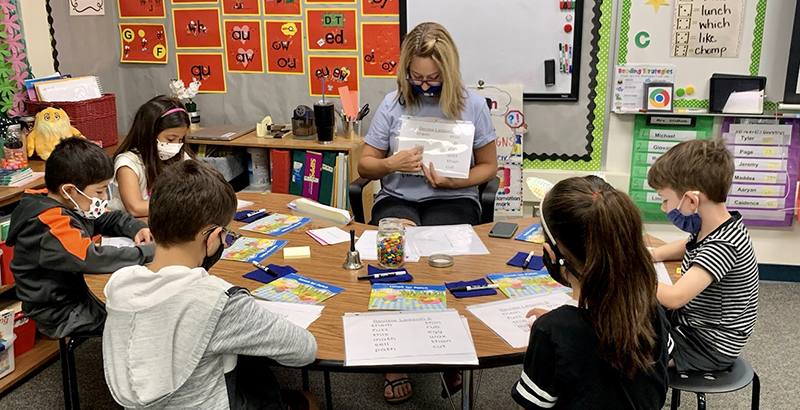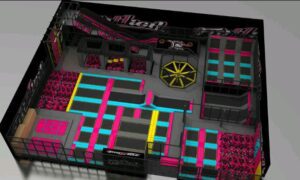A significant change in education is taking place in the center of Sacramento, California, and it is changing the way that struggling readers—especially those with dyslexia—are taught. For kids who antiquated teaching strategies have traditionally left behind, the emergence of evidence-based reading programs like the one provided at Read Academy is altering the course of history. For parents searching for a structured literacy Sacramento California, understanding the difference between structured literacy and balanced literacy is essential.
The Issue With Equitable Literacy
In many conventional educational systems, balanced literacy has been the standard approach for decades. Balanced literacy is often promoted as a holistic strategy that combines reading comprehension, whole language, and phonics techniques flexibly. This flexibility has, however, proved troublesome, particularly for pupils who struggle with dyslexia or other reading difficulties.
Strategies like “three-cueing,” in which pupils are encouraged to guess words using context, visuals, or sentence structure rather than sounding out the word based on its phonetic structure, are frequently emphasized in balanced literacy approaches. Although this may benefit some children in the short term, it often leads to poor reading fluency and long-term decoding issues.
Furthermore, phonics instruction—a crucial part of building core reading skills—is often absent from balanced literacy programs. Students don’t develop the brain connections needed to become proficient, self-assured readers without this. Students with dyslexia are disproportionately affected by this deficiency, as they require organized and predictable learning environments.
The Structured Literacy Advantage Of Read Academy
For struggling readers, Sacramento’s Read Academy is a shining example of an evidence-based solution. Decades of scientific studies on how children, especially those with dyslexia, learn to read have served as the foundation for their organized reading program. Research has shown that this method is methodical, cumulative, clear, and diagnostic—all of which are essential components of successful reading training.
Structured literacy at Read Academy encompasses more than simply a phonics curriculum. It includes all aspects of language, including syntax, semantics, morphology, spelling, and phonology. In order to ensure mastery before presenting new material, lessons are carefully arranged to build upon previously taught topics. Deep understanding and the capacity to apply knowledge to new words are fostered by this approach, which balanced literacy does not provide.
The Benefits Of Structured Literacy For Dyslexic Students
About one in five kids suffers from dyslexia, yet many conventional schools lack the resources necessary to meet their needs. Read Academy’s organized literacy curriculum provides a lifeline by using clear teaching strategies that eliminate any possibility of guessing. In order to enable students to read freely and with confidence, they are taught how to decipher words utilizing syllable patterns, spelling rules, and sound-symbol correspondence.
Structured literacy addresses the unique neurological processing deficiencies linked to dyslexia, in contrast to balanced literacy’s generic approaches. In order to customize education and enable prompt correction of ability gaps, Read Academy’s instructors use diagnostic evaluations. This guarantees that each student gets the customized help they need to achieve.
Comparing The Results Of Balanced And Structured Literacy
The results of balanced and structured literacy vary significantly. According to national research, children who get instruction in organized literacy techniques improve their reading accuracy, fluency, and comprehension far more than those who receive instruction in a balanced literacy model.
Parents in Sacramento are increasingly using Read Academy due to the observable outcomes as well as the studies. Once struggling readers of basic phrases start decoding complex texts with ease, they feel better about themselves. They get more involved in school. Their chances for the future improve.
An Appeal For Reform Based On Evidence
Many schools are sluggish in implementing organized literacy programs, even in the face of growing evidence against balanced literacy. Budgetary restrictions, a lack of teacher preparation, and institutional inertia often act as obstacles. But the cost of not implementing good reading teaching is even higher, particularly for the most vulnerable pupils.
Sacramento’s educators and parents need to push for reform by requesting programs that are in line with the Science of Reading. Schools must stop using antiquated teaching strategies that don’t work for all students and instead invest in teacher preparation programs that emphasize organized literacy concepts.
Conclusion
The conflict between balanced and organized literacy goes beyond scholarly discussion; it is an issue of educational justice. Read Academy in Sacramento is demonstrating that all kids, even those with dyslexia, can learn to read with the correct guidance. In addition to being more successful, their evidence-based strategy, which is focused on organized literacy, is also more inclusive and compassionate.
For families looking for structured literacy, Read Academy is a revolutionary substitute for conventional approaches with programs in Sacramento, California, that provide tangible outcomes. It’s time for educational institutions worldwide to take their example and prioritize teaching reading based on research. It is essential to our children’s future.





























